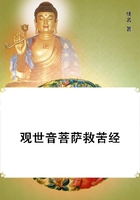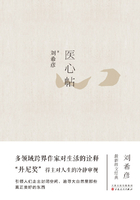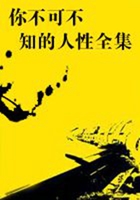"The Egyptians," he said, "excelled all the rest of the world in wisdom, and this man excelled all other Egyptians."The same king, I was also informed by the priests, afterwards descended alive into the region which the Greeks call Hades, and there played at dice with Ceres, sometimes winning and sometimes suffering defeat. After a while he returned to earth, and brought with him a golden napkin, a gift which he had received from the goddess. From this descent of Rhampsinitus into Hades, and return to earth again, the Egyptians, I was told, instituted a festival, which they certainly celebrated in my day. On what occasion it was that they instituted it, whether upon this or upon any other, I cannot determine. The following are the ceremonies:- On a certain day in the year the priests weave a mande, and binding the eyes of one of their number with a fillet, they put the mantle upon him, and take him with them into the roadway conducting to the temple of Ceres, when they depart and leave him to himself. Then the priest, thus blindfolded, is led (they say) by two wolves to the temple of Ceres, distant twenty furlongs from the city, where he stays awhile, after which he is brought back from the temple by the wolves, and left upon the spot where they first joined him.
Such as think the tales told by the Egyptians credible are free to accept them for history. For my own part, I propose to myself throughout my whole work faithfully to record the traditions of the several nations. The Egyptians maintain that Ceres and Bacchus preside in the realms below. They were also the first to broach the opinion that the soul of man is immortal and that, when the body dies, it enters into the form of an animal which is born at the moment, thence passing on from one animal into another, until it has circled through the forms of all the creatures which tenant the earth, the water, and the air, after which it enters again into a human frame, and is born anew. The whole period of the transmigration is (they say)three thousand years. There are Greek writers, some of an earlier, some of a later date, who have borrowed this doctrine from the Egyptians, and put it forward as their own. I could mention their names, but I abstain from doing so.
Till the death of Rhampsinitus, the priests said, Egypt was excellently governed, and flourished greatly; but after him Cheops succeeded to the throne, and plunged into all manner of wickedness. He closed the temples, and forbade the Egyptians to offer sacrifice, compelling them instead to labour, one and all, in his service. Some were required to drag blocks of stone down to the Nile from the quarries in the Arabian range of hills; others received the blocks after they had been conveyed in boats across the river, and drew them to the range of hills called the Libyan. A hundred thousand men laboured constantly, and were relieved every three months by a fresh lot. It took ten years' oppression of the people to make the causeway for the conveyance of the stones, a work not much inferior, in my judgment, to the pyramid itself. This causeway is five furlongs in length, ten fathoms wide, and in height, at the highest part, eight fathoms. It is built of polished stone, and is covered with carvings of animals. To make it took ten years, as I said- or rather to make the causeway, the works on the mound where the pyramid stands, and the underground chambers, which Cheops intended as vaults for his own use: these last were built on a sort of island, surrounded by water introduced from the Nile by a canal. The pyramid itself was twenty years in building. It is a square, eight hundred feet each way, and the height the same, built entirely of polished stone, fitted together with the utmost care. The stones of which it is composed are none of them less than thirty feet in length.
The pyramid was built in steps, battlement-wise, as it is called, or, according to others, altar-wise. After laying the stones for the base, they raised the remaining stones to their places by means of machines formed of short wooden planks. The first machine raised them from the ground to the top of the first step. On this there was another machine, which received the stone upon its arrival, and conveyed it to the second step, whence a third machine advanced it still higher. Either they had as many machines as there were steps in the pyramid, or possibly they had but a single machine, which, being easily moved, was transferred from tier to tier as the stone rose- both accounts are given, and therefore Imention both. The upper portion of the pyramid was finished first, then the middle, and finally the part which was lowest and nearest the ground. There is an inscription in Egyptian characters on the pyramid which records the quantity of radishes, onions, and garlic consumed by the labourers who constructed it; and I perfectly well remember that the interpreter who read the writing to me said that the money expended in this way was 1600 talents of silver. If this then is a true record, what a vast sum must have been spent on the iron tools used in the work, and on the feeding and clothing of the labourers, considering the length of time the work lasted, which has already been stated, and the additional time- no small space, Iimagine- which must have been occupied by the quarrying of the stones, their conveyance, and the formation of the underground apartments.
The wickedness of Cheops reached to such a pitch that, when he had spent all his treasures and wanted more, he sent his daughter to the stews, with orders to procure him a certain sum- how much I cannot say, for I was not told; she procured it, however, and at the same time, bent on leaving a monument which should perpetuate her own memory, she required each man to make her a present of a stone towards the works which she contemplated. With these stones she built the pyramid which stands midmost of the three that are in front of the great pyramid, measuring along each side a hundred and fifty feet.















